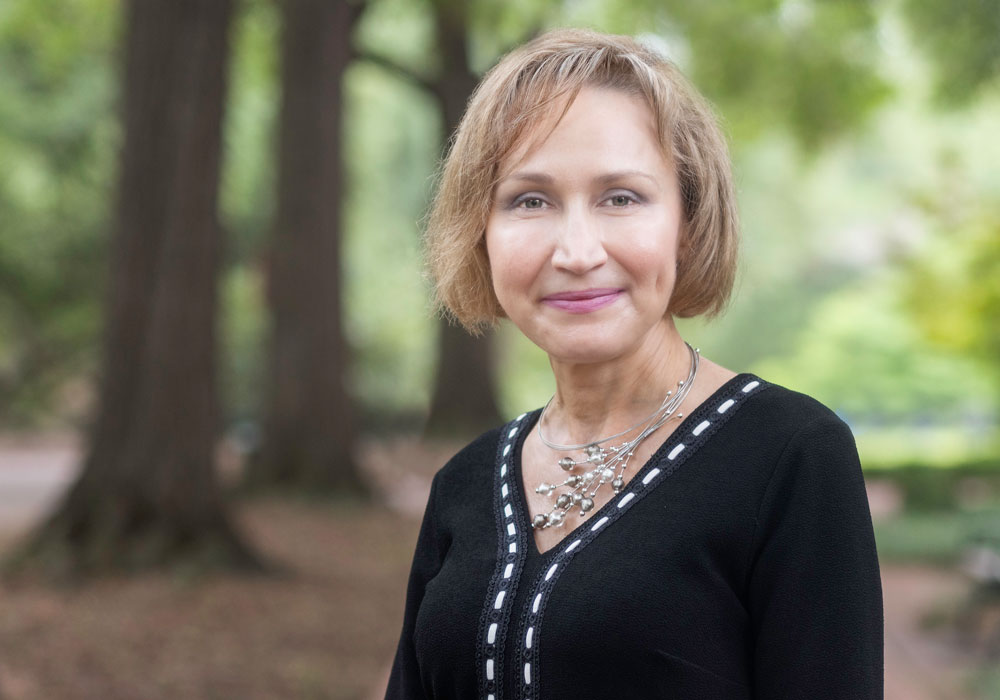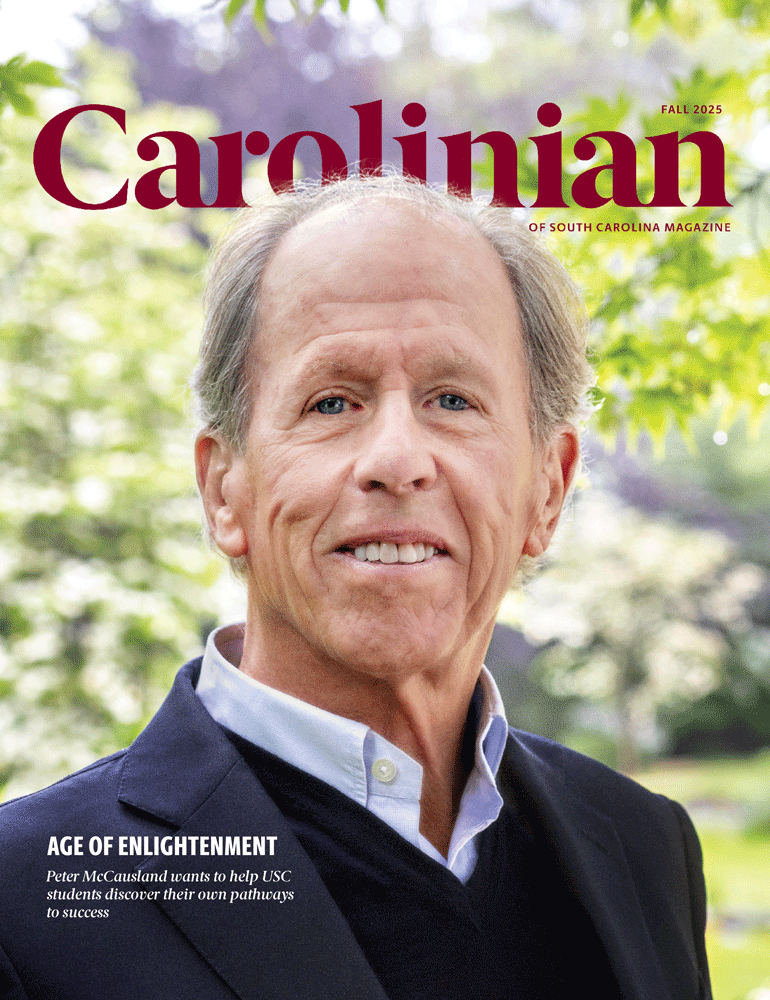When Ero Aggelopoulou-Amiridis enrolled as an undergraduate at the University of Wisconsin-Madison in 1987, she was just off the plane from her native Greece, the first person in her family to go to college. Twenty-five years later, USC’s first lady knows as much about being an American college student as anyone.
In addition to being married to a chemical engineering professor-turned dean-turned provost-turned president, she holds three college degrees — that bachelor’s in mathematics earned back in Madison, plus a master’s in art history and a Ph.D. in philosophy, both from USC.
But it was a single elective taken at the end of her undergraduate career that started her on the journey from mathematician to polymath.
“As much as I liked studying math, my last year in college I took an art history course and I completely loved it,” says Aggelopoulou-Amiridis. “If it wasn’t so late, I would have changed my major, but I was graduating that semester.”
Opportunity availed itself, though, when her husband, Michael, landed a job as a research engineer for a chemical company in Columbia, Maryland. Not having her green card yet, Ero couldn’t work — so she opted to go back to school at the University of Maryland.
“I thought, ‘Why don’t I study this amazing discipline that I like so much?’ ” she recalls. “So I took a number of undergraduate courses in College Park, and then I was admitted into the Ph.D. program.”
I had a professor who used to say that if you take out the first ‘i’ in ‘humanities,’ you’re left with ‘human ties.’ A liberal education does exactly that. It creates and reinforces very important ties — ties to history, to our past, but also to our present. It also ties us, most importantly, to each other.
Her initial focus was Byzantine art, but when she was a year into the program her husband joined the faculty in USC’s College of Engineering and Computing as an assistant professor and she transferred to USC’s art history master’s program, where her interests broadened. Ultimately, her thesis would be on the symbolism of mirror images in Renaissance depictions of the sacraments.
“It was fascinating to study how the writings of the Christian fathers translated into images in different traditions,” she says. “It enhances your spiritual experience when you’re in a church and you see those mosaics or those icons or those stained-glass windows. I always wanted to know how these artists communicated important dogmas and ideas, all along creating these very spiritual images.”
She lights up as she revisits that chapter of her life, but that doesn’t mean the President’s House is now decked out with early Christian mosaics or Italian Renaissance egg tempera. Her tastes are as eclectic as her intellectual pursuits, and the artwork hanging on her walls nowadays veers more toward the modern.
“Art is a wonderful experience, and it can come at you differently at different times in your life, maybe even at different times in your day,” she says. “What I enjoy most about the more modern works is the vibrant color. I find that very appealing. I find myself drinking my cup of coffee, talking to people, and at the same time kind of watching these beautiful paintings.”
It’s not strictly a passive pleasure. She hit the books hard, completing her master’s — “A lot of reading went into trying to understand those Renaissance images,” she explains — and she can be equally inquisitive in moments of quiet reflection.
For Aggelopoulou-Amiridis, thought begets thought. Her interest in art history, for example, led to a broader interest in aesthetics, which in turn led to the Ph.D. in philosophy. Her dissertation explored Aristotle’s pathē, which are roughly analogous to what we might today call the emotions.
“You can think about art philosophically,” she muses. “What really attracted me to philosophy was the methodology of the discipline, that it questions every assumption and continuously asks, “Why?’ If you asked my parents what was the most annoying thing about me when I was a kid, I swear they would say, ‘She was always asking, ‘Why? Why? Why?’”
She laughs softly, recalling herself as a child in Greece: “But what they saw as defiance was genuine curiosity. That’s how I make sense of the world. I have to know why we behave the way we behave, why we believe the things we believe.”
And if she were to re-enter the classroom as a student now? The question delights her, even if her schedule as first lady makes the prospect unlikely, and her answer fits with the rest of her journey, even if it initially seems like a departure.
“Oh goodness, I would study psychology,” she says. “I am fascinated by psychology, understanding what makes human beings act and think and feel the way they do — and then thinking about how we can help people when something goes wrong.”
It’s perhaps no surprise that her husband emphasizes the value of a liberal education — or that he credits his wife with helping him think as broadly as he does about the higher education curriculum. She credits her professors and reaches for a mnemonic device.
“I had a professor who used to say that if you take out the first ‘i’ in ‘humanities,’ you’re left with ‘human ties,’” she says. “A liberal education does exactly that. It creates and reinforces very important ties — ties to history, to our past, but also to our present. It also ties us, most importantly, to each other.”
Her degrees have enabled her to teach philosophy at USC and art history courses at other Midlands colleges, but they also laid the groundwork for a rich life beyond the classroom. She is an avid reader, a museumgoer and a devotee of the performing arts. But as first lady, she intends to focus on students, whether they’re facing difficult challenges like food insecurity or mental health issues, or just trying to navigate their education as first-generation college students like she once was herself.
“You know, I came from Greece straight to Madison, Wisconsin, and everything was so new and different. I was super excited, and I was also a little terrified,” she says. “But it is so liberating to get an education and truly wonderful to be a student. I loved being a student. It was one of the greatest experiences of my life.”

